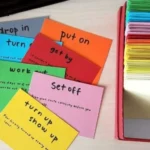Flashcards are one of the most effective learning tools, widely used by students, educators, and professionals to reinforce knowledge.
They help improve memory retention, boost recall speed, and support active learning. With the rise of digital education, online flashcards have become even more popular, offering interactive features and accessibility across multiple devices.
In this guide, we will explore how to create flashcards for effective online learning, covering various tools, best practices, and advanced techniques to optimize learning outcomes.
Benefits of Using Flashcards for Online Learning
Before diving into the creation process, it is important to understand why flashcards are so effective.
| Benefit | Description |
|---|---|
| Active Recall | Encourages memory retrieval, strengthening knowledge retention. |
| Spaced Repetition | Helps users review material at increasing intervals for better long-term retention. |
| Engagement | Makes learning interactive and enjoyable, especially with multimedia elements. |
| Customization | Allows learners to tailor content to their needs and learning styles. |
| Portability | Digital flashcards can be accessed from anywhere, making learning convenient. |
| Improved Focus | Helps learners stay engaged and avoid distractions by breaking information into manageable pieces. |
| Collaborative Learning | Enables group study and peer-to-peer learning. |
ALSO READ: Understanding Crypto Fraud and How to Protect Yourself: A Guide to Funds Recovery Services
Step-by-Step Guide to Creating Effective Flashcards

Choose the Right Online Flashcard Tool
There are various digital flashcard tools available that offer different features. Some popular ones include:
| Tool | Features |
|---|---|
| Anki | Spaced repetition, multimedia support, synchronization across devices. |
| Quizlet | Pre-made flashcard sets, games, and study modes. |
| Brainscape | Adaptive learning algorithms and collaborative options. |
| Cram | Flashcard customization and multiple learning modes. |
| StudyBlue | Community-shared flashcards and progress tracking. |
| Memrise | AI-powered adaptive learning and gamification features. |
| RemNote | Hierarchical note-taking and flashcard integration. |
Define Your Learning Objectives
Before creating flashcards, clarify your study goals. Ask yourself:
- What topics need to be covered?
- How detailed should the flashcards be?
- Will they be used for quick revision or in-depth understanding?
- What type of questions will best facilitate learning?
Design Your Flashcards Effectively
A well-designed flashcard enhances learning efficiency. Follow these best practices:
- Keep Information Concise: Avoid cluttering the flashcard with too much information. Stick to key concepts and facts.
- Use Clear and Simple Language: Use easy-to-understand language and avoid unnecessary complexity.
- Incorporate Visuals and Multimedia: Adding images, diagrams, or audio clips can improve retention and engagement. Videos can also provide deeper insights into complex concepts.
- Utilize Mnemonics and Memory Aids: Acronyms, rhymes, and storytelling techniques can make information easier to recall. For example, using “PEMDAS” to remember the order of operations in mathematics.
- Implement Question-and-Answer Format: Formulating flashcards as questions helps stimulate active recall and enhances learning. Example: Instead of stating “The capital of France is Paris,” ask “What is the capital of France?”
- Color Code and Categorize: Using different colors for different topics or categories can enhance visual organization and quick recall.
Organize Flashcards for Better Learning
Proper organization is key to efficient study sessions.
- Categorize by Topic: Group related flashcards into decks for structured learning.
- Use Tags and Labels: Helps in easy searching and filtering.
- Set Difficulty Levels: Prioritize difficult concepts for frequent revision.
- Shuffle Periodically: This prevents order-based memorization and strengthens retention.
Utilize Spaced Repetition Techniques
Spaced repetition is a scientifically proven technique to improve memory retention. Tools like Anki and Brainscape use algorithms to schedule reviews at optimal intervals. Adjust review frequency based on difficulty.
Test and Improve Your Flashcards
Regularly review and refine your flashcards based on:
- Self-Assessment: Identify weak areas and adjust flashcards accordingly.
- Peer Feedback: Sharing with study groups can bring fresh perspectives.
- Performance Analytics: Many apps provide statistics on recall rates and progress.
- Engagement Tracking: Monitor which flashcards are skipped or incorrectly answered most often.
ALSO READ: How to Evaluate the Quality of a Free Online Course Before Enrolling?
Advanced Flashcard Techniques

For enhanced learning, consider these advanced strategies:
- Gamification: Many platforms incorporate quizzes, leaderboards, and challenges to make learning fun and motivating.
- Dual Coding Method: Combine textual and visual information for better comprehension. Example: Using an image of a plant cell alongside its key functions.
- Contextual Learning: Instead of standalone facts, present flashcards in context. Example: Instead of “Definition of Photosynthesis,” use “Why is photosynthesis essential for plant survival?”
- Personalized Learning Paths: Adaptive learning platforms like Brains cape adjust flashcard difficulty based on individual progress.
- Audio Flashcards: For language learners or auditory learners, recording audio clips of definitions or phrases can reinforce learning.
- Scenario-Based Flashcards: Create situational-based questions that require problem-solving rather than rote memorization. This method is particularly useful in medical, business, and technical fields.
Common Mistakes to Avoid
| Mistake | Solution |
|---|---|
| Overloading with Information | Keep it concise; break down complex topics. |
| Lack of Review Strategy | Follow a structured spaced repetition schedule. |
| Ignoring Visuals | Integrate images, videos, and color coding. |
| Not Testing Understanding | Use recall-based questions instead of simple recognition. |
| Repetitive or Boring Content | Use different question formats and interactive elements. |
| Overuse of Passive Learning | Engage actively by answering flashcards out loud or applying knowledge in real-world scenarios. |
ALSO READ: How to Make the Most Out of Study Groups in Online Courses?
Conclusion
Creating effective flashcards for online learning requires strategic planning, the right tools, and best practices.
By incorporating techniques like spaced repetition, multimedia elements, and gamification, learners can significantly enhance their retention and comprehension.
Whether for academic purposes, professional development, or personal growth, well-crafted flashcards are an invaluable resource in the digital learning era.







